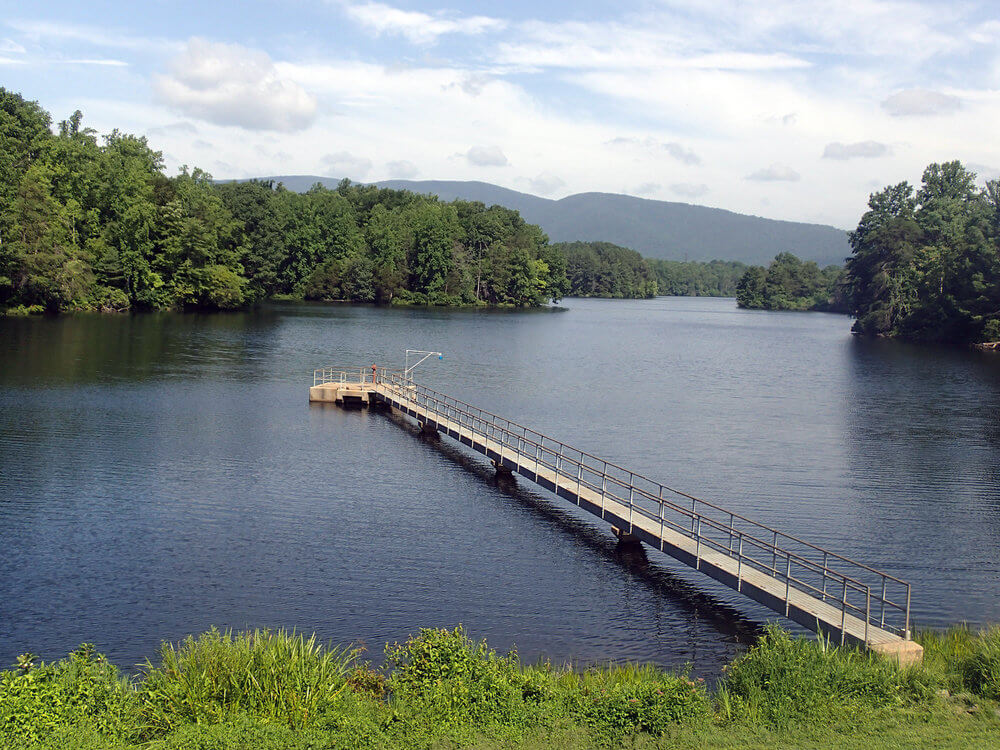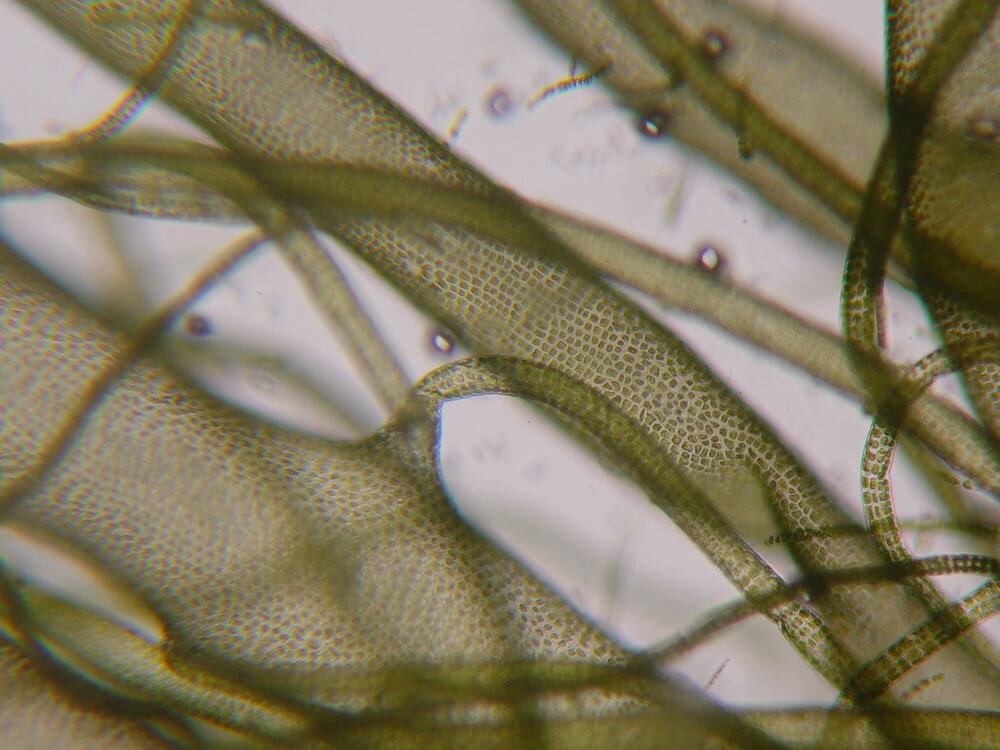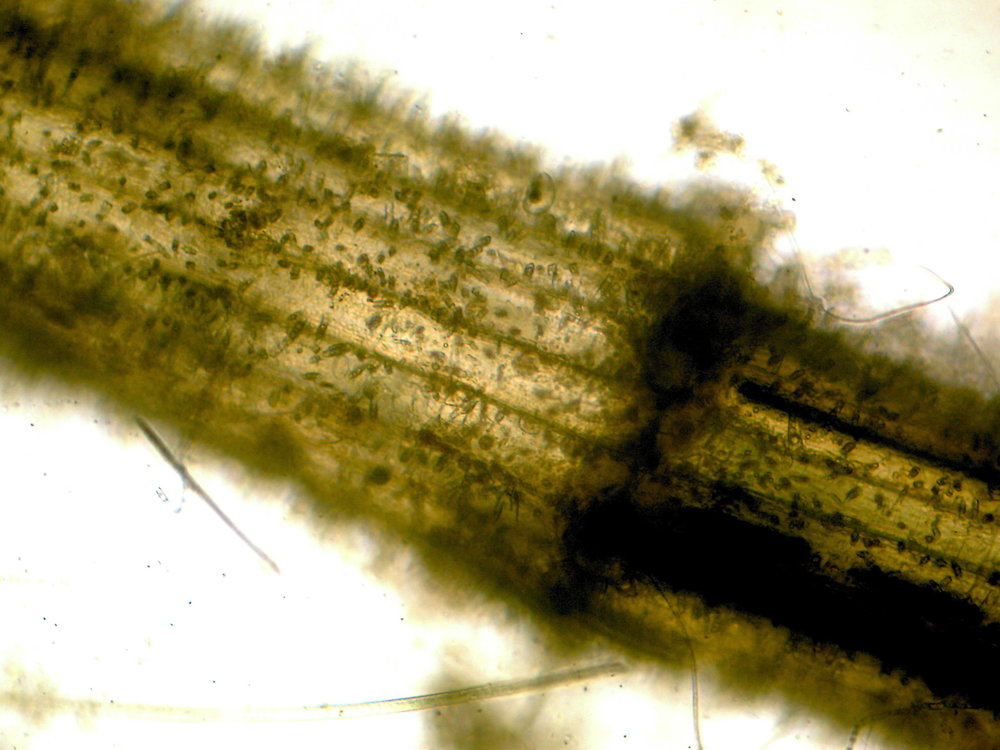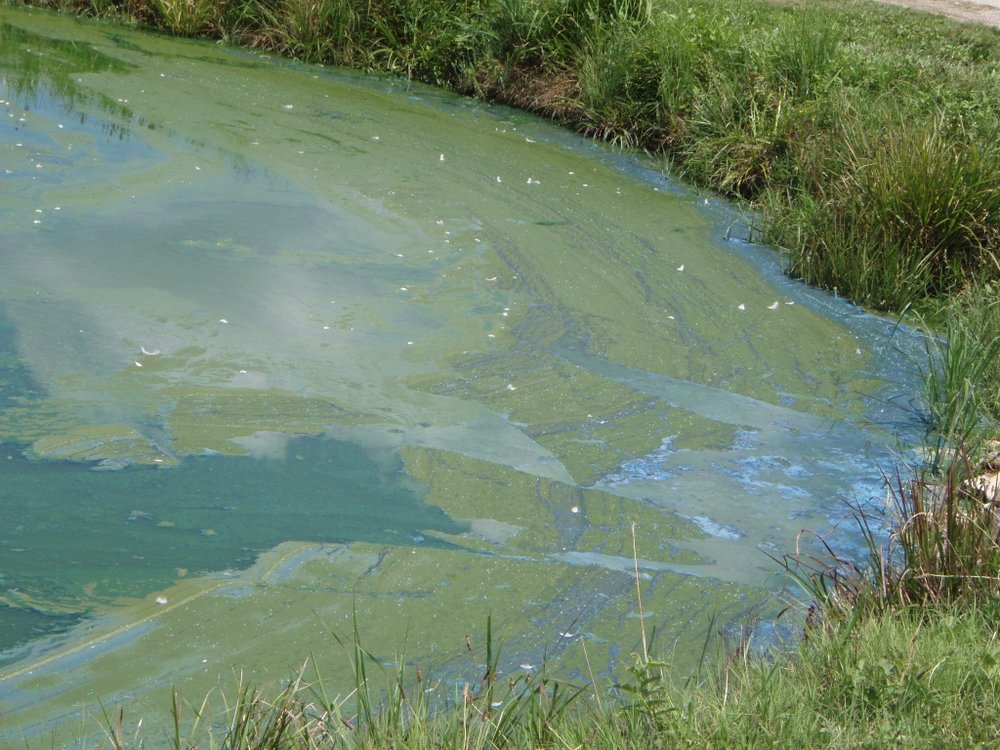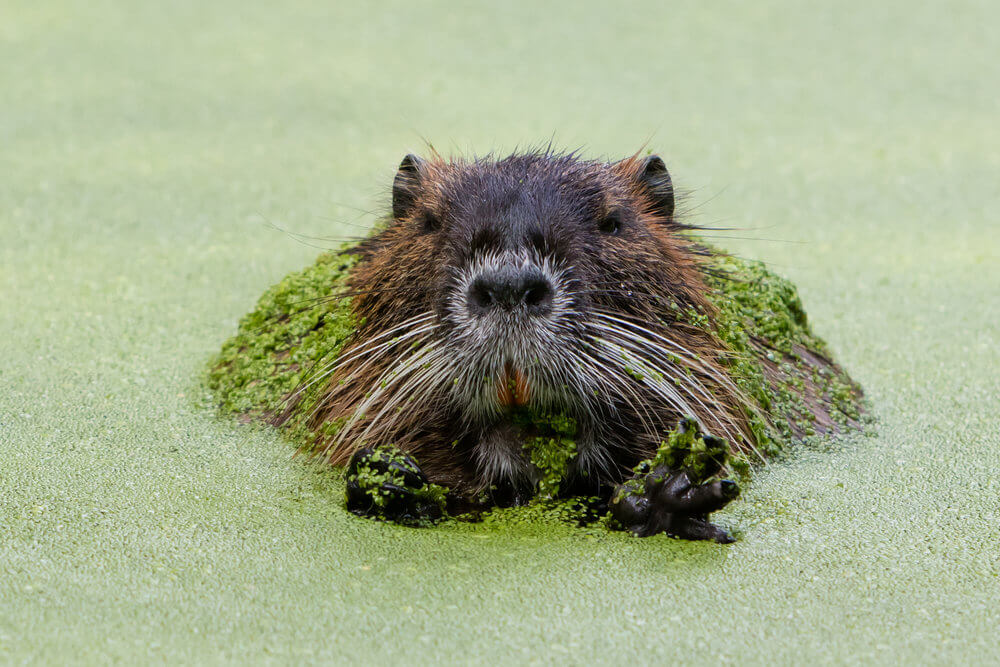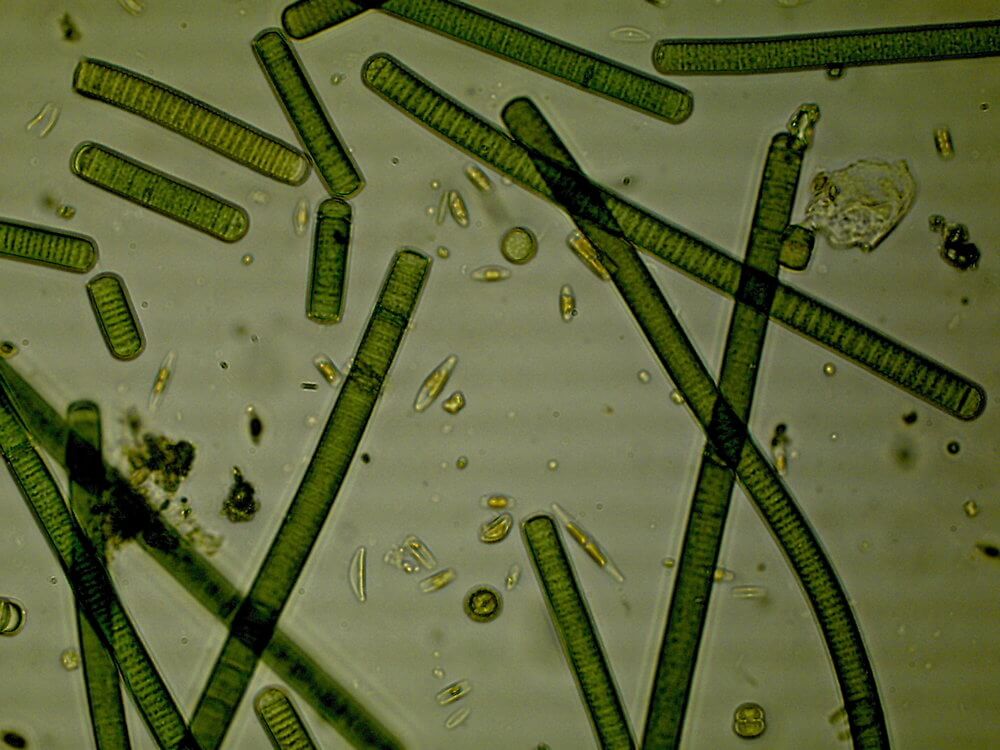Algae Corner: Toxic, Noxious, and Smelly Algae (part 1)
Today, we're going to showcase a broad overview of many different algae groups that can cause significant impacts to humans and wildlife in their environment, from golden algae and euglenoids to diatoms and raphidophytes.
Want to get Updates? Get the latest news by subscribing to our channel:
Defining Toxins
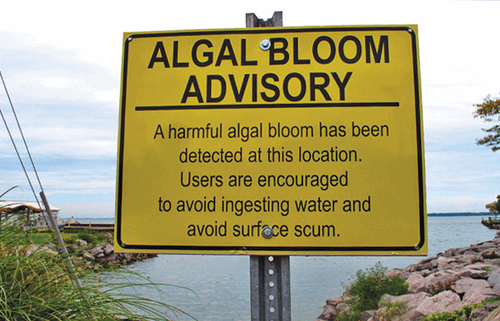
Before we really get started on the types of algae, there is one word that you're going to hear a lot today, and that is toxin. The toxicity of many types of algae to other organisms is from these compounds called toxins. So, I thought it would be good to start with a general definition of toxin and really help set up some of the things we'll hear about later on.
Toxins are biologically produced compounds that can impair the health or injure other organisms, especially at concentrations commonly encountered in aquatic resources. It’s something produced, by the algae in this case, that can impact humans, wildlife or other organisms in the water resource.
Golden Algae
Let's get started with our first algal group, known as the Golden Algae. That's just based on the coloration, or the pigments that they contain. So don't waste your time trying to collect and sell them! It's just the color of the algae and it is very small, around 10 microns long in the water. The primary species of concern here is called Prymnesium parvum. But he does have an ugly cousin called Chrysochromulina parva.
Both species can produce similar toxins and certainly pose risks to fish in the water resource. These are broadly grouped in the phyla Haptophyta, meaning they're small, flagellated single cells that swim through the water column. You probably wouldn’t even know they're there unless you start seeing fish toxicity. So that's a problem with prymnesium and its ugly cousin, as they both produce a whole host of different toxins known as prymnesins.
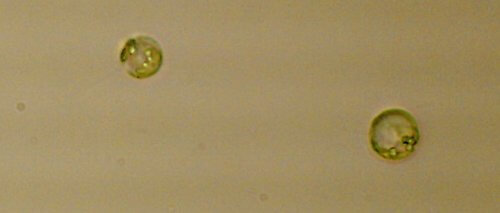
These prymnesins can impact the gills of primarily fish, but other things that live in the water resource. Millions of fish die each year from blooms of prymnesium parvum. Florida, Texas, California, Nevada, South Carolina are just a handful of the states affected, but it's been found in over 16 states throughout the United States.
Prymnesium does like slightly cooler waters and it's primarily found in fresh waters with higher salinity or brackish water scenarios, but it certainly can be found in many different water resources.
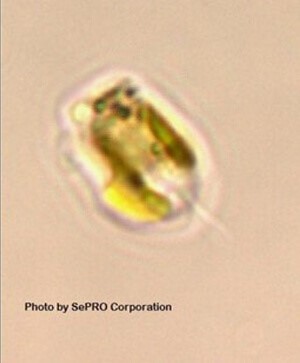
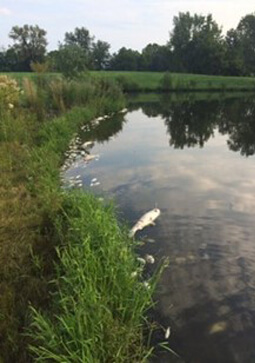
Dinoflagellates
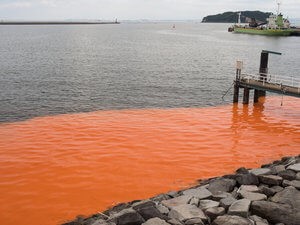
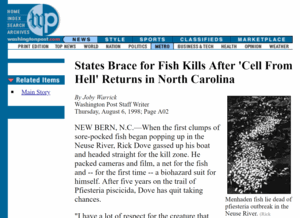
The next group we’re going to talk about are the dinoflagellates. This is an extremely diverse and very large group of algae that produce many different types of toxins. Some of the most widely known dinoflagellates are responsible for red tide events. These are primarily in the ocean or in marine environments that shut down ocean beaches and impact ocean invertebrates and fish.
Some of the genre of algae common in red tide events include Gymnodinium, Gonyaulax, Alexandrium, and Karenia. Now, one of the main issues with red tides is the production of the toxin. Remember, we talked about and defined toxin.
Specifically, they produce this toxin called brevetoxin. This is a very potent neurotoxin. It can relate to inhalation, consumption, and dermal exposure, so we can be exposed to this toxin in many different ways. Often, you hear about brevetoxin built up through shellfish. They concentrate the algae, they concentrate this toxin and it can then be exposed to humans that eat the shellfish.
Again, these blooms can wreak havoc on almost any type of wildlife in the system, whether it’s manatees, fish, or invertebrates that come in contact with these blooms. Some are so large that they can be seen from space. Tourism dollars are greatly impacted as well. Beaches are often shut down. So red tides produced by dinoflagellates are a very big group of nuisance, noxious algae that certainly made our list today.
One other dinoflagellate of note that I want to mention is called Pfiesteria. This is often more in brackish waters or intertidal zones, even into fresh waters, but this can produce some potent toxins and negatively impact fish. It's caused billions of fish kills throughout its history.
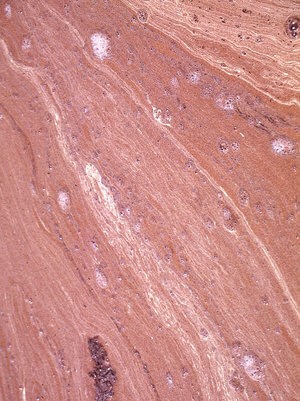
Raphidophytes
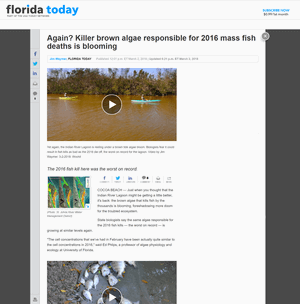
Another group of algae are the Raphidophyte algae. These are small, flagellated algae called Heterokont Algae, meaning they have two flagella of different sizes.
Some of the common types here are Chatonella and Heterosigma. They're different than dinoflagellates. They're in a slightly different group, but they can produce large marine and estuarine blooms with high toxicity and produce that same toxin, brevetoxin, as the dinoflagellates did.
These blooms can be referred to as red tides as well, but they're often referred to as brown tides because of the coloration of them.
Diatoms
The next group of algae we're going to discuss are the diatoms. Most diatoms are good for a water resource. Some are very good, but there are a few types that can negatively impact animals and humans as well. One of particular importance in the marine environment is called Pseudo-nitzchia. This can produce Domoic Acid.
The problem with this toxin is that it accumulates in shellfish and moves up the food chain into whatever eats it. Domoic acid can negatively impact the gastrointestinal tract, the central nervous system, the cardiovascular system, essentially a lot of different impacts from this toxin on human health as well as animal health.
One of the most common impacts of consuming domoic acid is memory impairment. You have a hard time understanding and remembering things after you're exposed to it, and that's led to its name, “amnesic shellfish poisoning.”
Toxic blooms of pseudo nitzschia have shut down all sorts of shellfish industries. A couple years ago in the western United States, the shellfish industry was shut down from Mexico to Alaska because of a massive bloom of pseudo nitzschia producing this toxin.

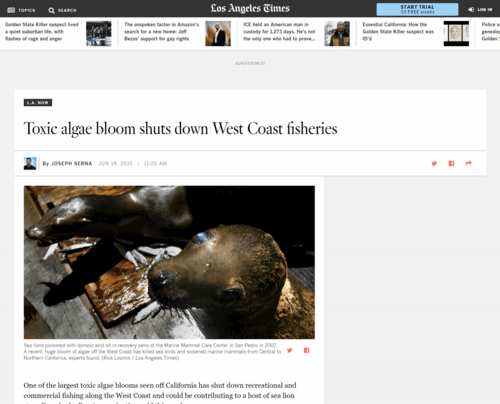
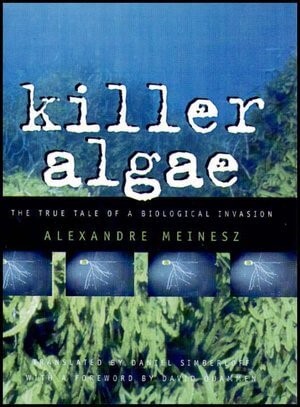
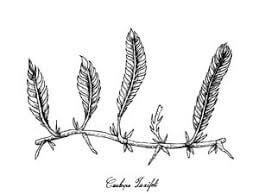
So, it can build up, it can cause great issues in higher animals like sea lions and humans that eat those affected shellfish.
Another algae of great concern is actually a seaweed. It’s a large kelp that grows in the marine environment called Caulerpa taxifolia. It is highly invasive in marine environments. It often gets around through the aquarium trade.
So people buy it, they put it in their aquarium, and when they get tired of it, they dump it out in the ocean or inner tidal zones. This is one of the most effective ways for it to get around.
Caulerpa taxifolia has unique dissected fronds that look like a feather, hence its nickname, the feather alga. There's a whole book on this organism, its invasiveness, and how it can wreak havoc in the marine environment. It's a book by Alexandre Meinesz called “Killer Algae.”
So, in short, this made our toxic, noxious, and smelly algae list because it can do some great and terrible things when introduced to the ocean. First of all, it can produce toxins. These can greatly impact fish and invertebrates, even sea urchins that live in the water resource.
It can grow so thick, it creates these vast meadows on the ocean floor where nothing else can survive, basically thousands of acres of just caulerpa choking everything else out and certainly not moving up through the food chain. So again, it’s a very potent, nasty marine kelp.
Euglenoids
Our last group of algae today is a freshwater group called euglenoids. Euglenoids have been documented to produce a potent fish toxin, called an icthyotoxin. Dr. Paul Zimba has documented the toxicity of many different euglena species including sanguinea and granulata to fish.
Euglena are flagellated cells. They have two flagella that can swim around, but they also have this pigmented eye spot, so they can sense different light intensities. They can see and they can move throughout the water. Oftentimes they will go into a resting state cyst.
They produce more of the pigment astaxanthin that looks red and can pop up to the surface of the water body, in some of the pictures you'll see here, and form this resting stage cyst scum. It looks like a red scum on the surface of the water body. The problem with euglena are again, these fish toxins can be very harmful.
So it’s important to keep an eye out if you see this red coloration in your water body, particularly this red scum.
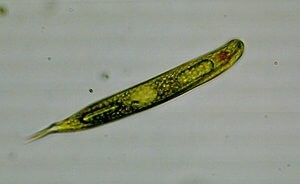
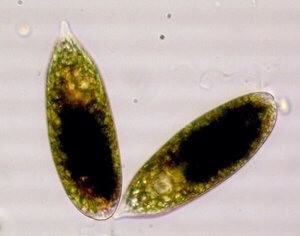
Summary
As you can see, there are many types of algae that can produce toxins and cause impacts in different ways, from small flagellated phytoplankton to these large, multi-celled marine kelp. Algae can cause devastating impacts to the ecological system, wildlife, and humans.
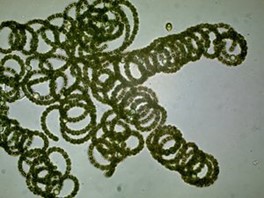
Today we covered a broad overview of many of the toxic, noxious, and smelly algal groups, but there are certainly more I couldn't cover. So, if you're thinking of one that I missed, let me know! Many of the ones I talked about today are marine, but there are quite a few that can bridge into the freshwater environments like the haptophytes and euglenoids.
One of the primary groups in fresh waters that I didn’t discuss today are the cyanobacteria. There's so much information on cyanobacteria that we created a whole second half of this topic focused on these bacteria and their impacts. So please see part two, focused on cyanobacteria, for more information. Thanks for tuning in!
